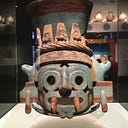On Passover there is a family supper traditionally and a book, the Haggada, is read (it's about 40-50 pages and there's a dinner break in the middle, it takes all evening). It recounts the Jews deliverance from bondage in Egypt.
In it, there is a section known as the Ma Nishtana (Hebrew: מה נשתנה). It is a section at the beginning of the Passover Haggadah known as the The Four Kushiyot or The Four Questions.
It starts with "Why is this night different from all other nights?", traditionally asked via song by the youngest capable child attending Passover Seder.
The questions are included in the haggadah as part of the Maggid (מגיד) section. The questions originate in the Mishna, Pesachim 10:4, but are quoted differently in the Jerusalem and Babylonian Talmuds.
The Jerusalem Talmud only records three questions;
Why foods are dipped twice as opposed to once?
Why matzah is eaten instead of bread?
Why the meat sacrifice eaten is exclusively roasted. (The last question is a reference to the paschal sacrifice which was fire-roasted).
The Babylonian Talmud quotes four questions;
Why matzah is eaten.
Why maror (bitter herbs) is eaten.
Why meat that is eaten is exclusively roasted.
Why food is dipped twice (in salt water to symbolize tears shed in bondage).
Now, as the paschal sacrifice was not eaten after the destruction of the temple by the Romans, the question about the meat became archaic and nonsensical. So it was dropped from the official texts.
Later, the great rabbis Rambam and Saadia Gaon both added a new question to the liturgy to replace it:
Why do we recline on this night while eating, unlike all other nights?
While there was resistance at first to this addition, ultimately, the question of reclining was maintained. In part to create a parallelism between the number of questions and the other occurrences of the number four in the hagaddah.
FYI- Jews are BIG into numerology. There's a whole "Jewish occult" know as Kabbalah that is a part of Jewish tradition and deals with the numerology of the Torah and Talmud.
Traditionally, Ma Nishtana is recited in the chant form called the major lern-steiger ("study mode" – a chant used for reciting lessons from the Talmud or Mishnah). One of the current tunes widely used for the Ma Nishtana was written by Ephraim Abileah in 1936 as part of his oratorio "Chag Ha-Cherut".
Then all the grandparents tell them how good they did and how smart they are. Usually followed by sweets or cash.
It's all filled with stories and mnemonic songs/chants designed to stick in your head and teach you "who you are as a person, in the world, in relationship with G-d".
WAY MORE than you wanted to know, right?
;-)
